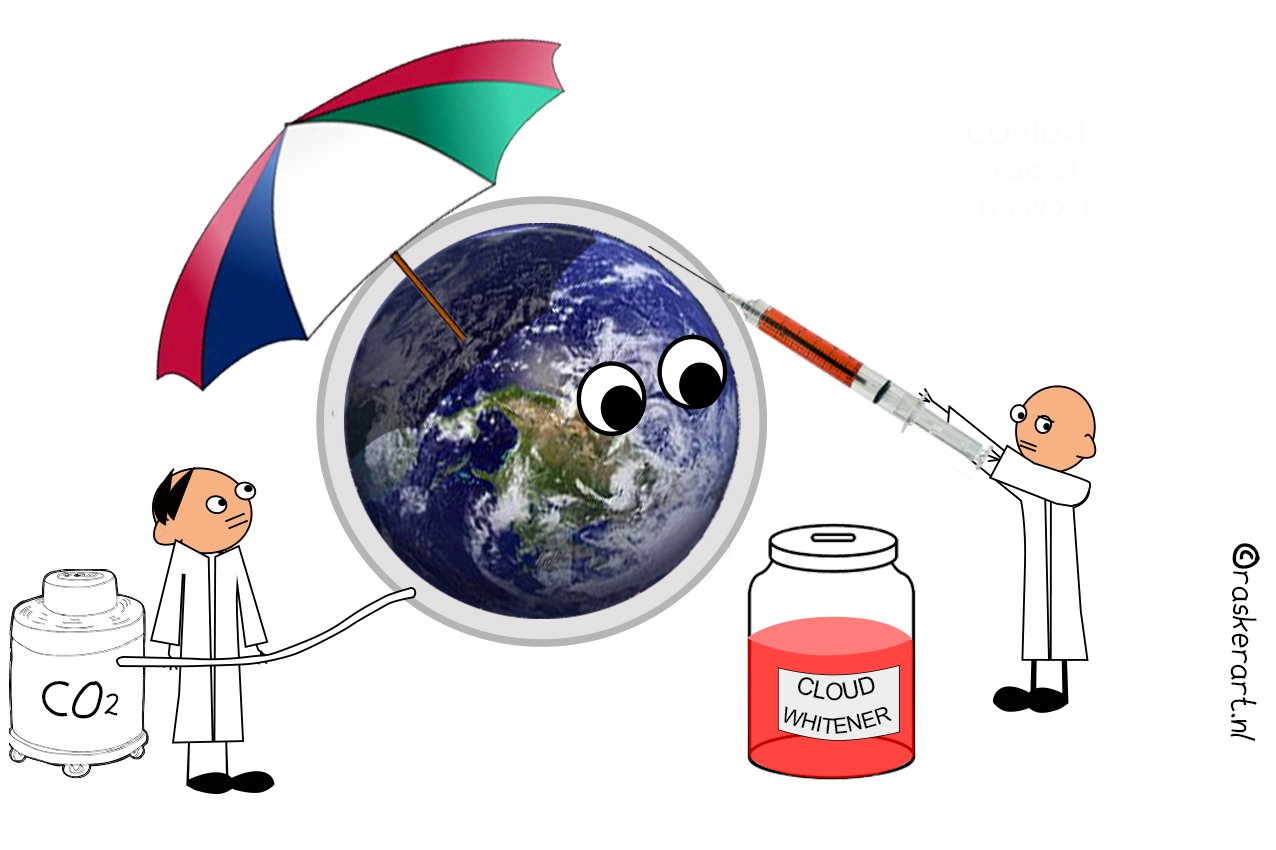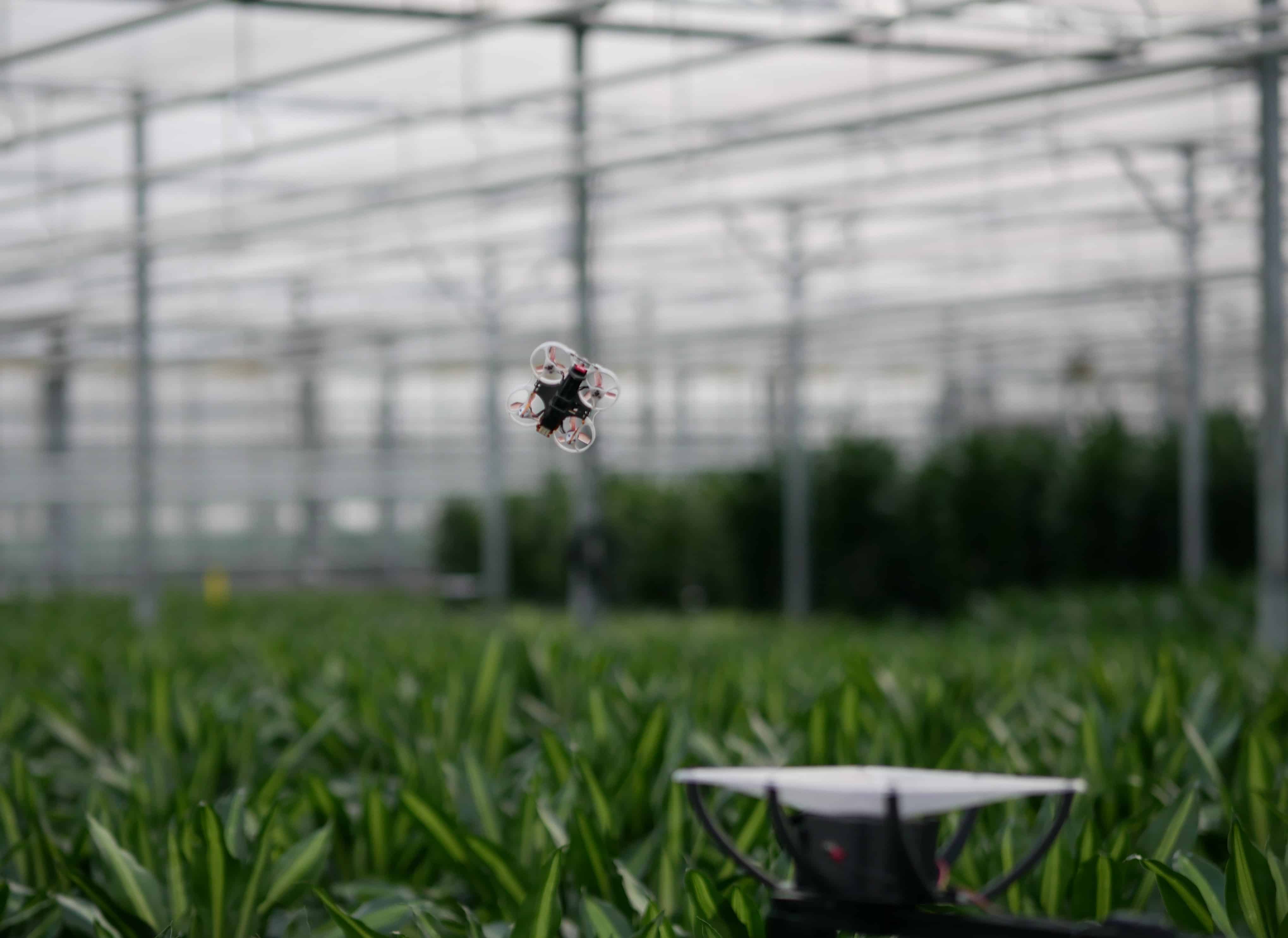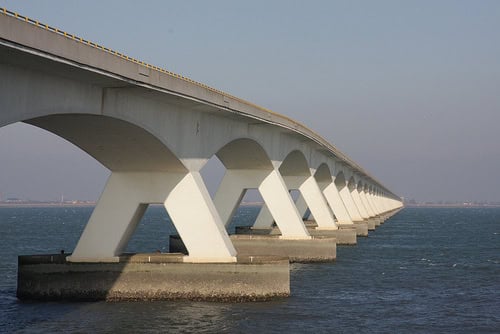
Even if global warming was brought to a halt right now, Greenland’s ice cap will still continue to erode. That’s because measures to counteract CO2 emissions are not happening fast enough. What can we do with geoengineering that concerns solutions whereby humans themselves intervene in nature?
Herman Russchenberg, professor Atmospheric Remote Sensing at TU Delft and director of TU Delft Climate Institute in the Netherlands, prefers the term climate engineering. “That is a bit more explicit. Geoengineering also involves, for example, underground tunnels. Climate engineering roughly boils down to developing techniques and methods to intervene in the climate system itself so that the earth cools down.”
There are two main schools of thought in climate engineering: Solar Radiation Management (SRM), and Carbon dioxide Removal (CDR).
Sunlight
Solar radiation management can be done by constructing reflections in the atmosphere or on the earth’s surface. For example, by bringing dust particles – aerosols – into the earth’s upper atmosphere, the stratosphere, says Russchenberg. These particles spread over a large part of the earth’s surface from there. “Nature has shown that it works. You have the same effect during a major volcanic eruption. A lot of dust particles enter the stratosphere and you see the temperature drop for a longer period of time.”
TU Delft is researching, among other things, how these aerosols can be put into the stratosphere. “How do you get those dust particles to the upper atmosphere in a sustainable way? Conventional planes cannot go there. It’s too high for that and air resistance is too low to support them.” Students at Technology University of Delft came up with the Stratospheric Aerosol Geoengineering Aircraft (SAGAs). These are airplanes that can carry five megatons of aerosols to altitudes ranging from 18.5 to 19.5 km per year.
Another example of SRM is to whiten up the clouds. “You can do that by sailing ships that take sea salt out of the seawater and blow it up upwards with fans. Small dust particles are created with that sea salt and these become cloud drops again. Which causes more reflection of sunlight.”
Carbon dioxide
Planting trees is perhaps the most well known and most natural method of extracting and storing CO2 from the atmosphere. “But you could also extract CO2 from the air in an industrial and technological way. With filters and chimneys that suck in air and then use it as a raw material for other products or directly store it underground. Where it will hopefully remain for thousands of years.”
And what about fertilizing the ocean with iron? Russchenberg: “That provides a kind of manure that allows plankton to grow. Plankton lives off CO2 and extracts it from the atmosphere. When plankton dies, it takes CO2 with it to the bottom of the ocean.”
Russchenberg also mentions biochar as another interesting method for CDR. Biochar is made by burning biomass at exceptionally high temperatures of over 350 degrees Celsius, without any oxygen. “This enables you to decouple oxygen and carbon molecules. What is then created is a product that you can use to enrich your soil. For one thing, carbon retains moisture more effectively. It makes the soil more fertile.”
India
Russchenberg says that the Dutch universities TU Delft and Wageningen University and Research are going to work together to develop this technique in Kerala, a state in southwest India. “They are suffering a lot from climate change there. The monsoon has become unpredictable. Floods and droughts are becoming much more frequent. They are really interested in India in how you can apply these kinds of techniques on a large scale.”
Stopgap solution
Climate engineering may sound simple and appealing, however, Russchenberg warns, “at best it’s a stopgap solution.” There are all kinds of difficulties with these techniques. For example, aerosols in the stratosphere lead to a shift in the solar irradiation on earth. “This does not happen to the same extent everywhere. You get shifts in weather patterns and when the weather changes, the living environment also changes. You have to understand these effects extremely well before you start using this technique.”
Or when it comes to fertilizing the ocean. “It is difficult to predict its impact on the ecosystem. Growing more plankton alters fish stocks and the biological equilibrium. On larger scales, this may cause different migration patterns of fish, which may also disrupt regional balances.”
International approach
In order to be able to utilize climate engineering, you really have to think carefully about how you are going to go about it, what the effects are and how you come to a decision, Russchenberg adds. “It is wrong to leave it up to one single country. A technique that you apply in location A has an impact on location B.”
The professor envisions a UN-like organization that arranges the decision-making process on an international level. “When are we going to implement it, when are we going to turn the equipment on and off. But it’s also about how we deal with sharing the burden and compensatory measures, as well as the migration patterns that you might be faced with. You have to look at the whole picture.”
The University of Southampton did research into the impact of geoengineering on the climate. The researchers looked at the various methods and assessed them in terms of safety, affordability, and effectiveness. They found, for example, that stratospheric aerosols are effective and affordable yet score only moderately on safety.
“My personal stance is that we must do everything we can to reduce CO2 emissions. But we must also anticipate that we may fail. If so, then you need developments like Solar Radiation Management in order to save some time. But you should never see this as the solution to the problem.”








